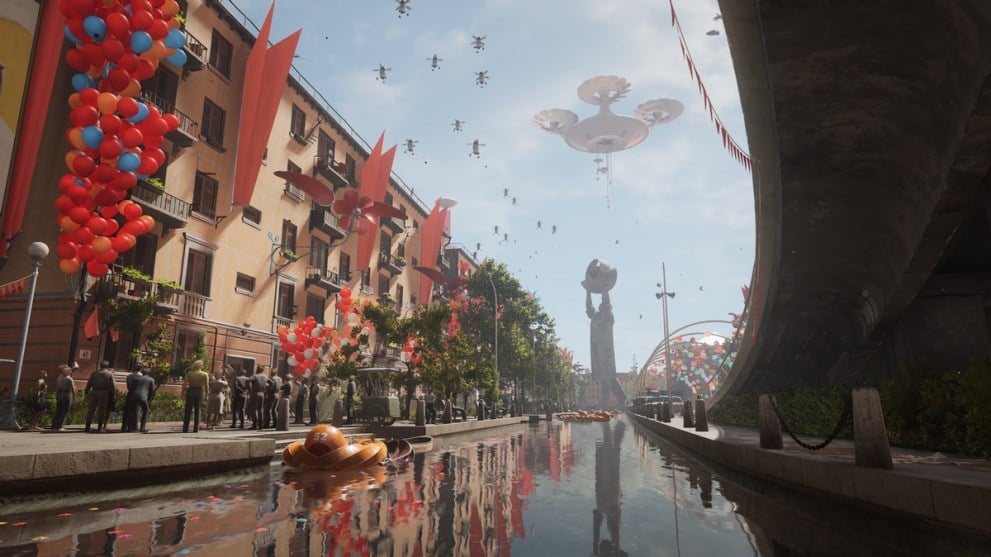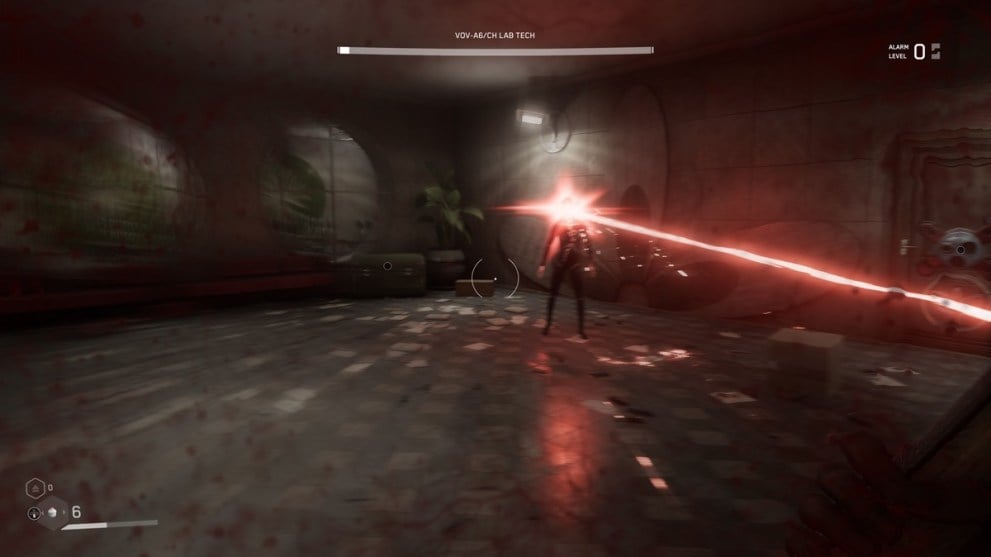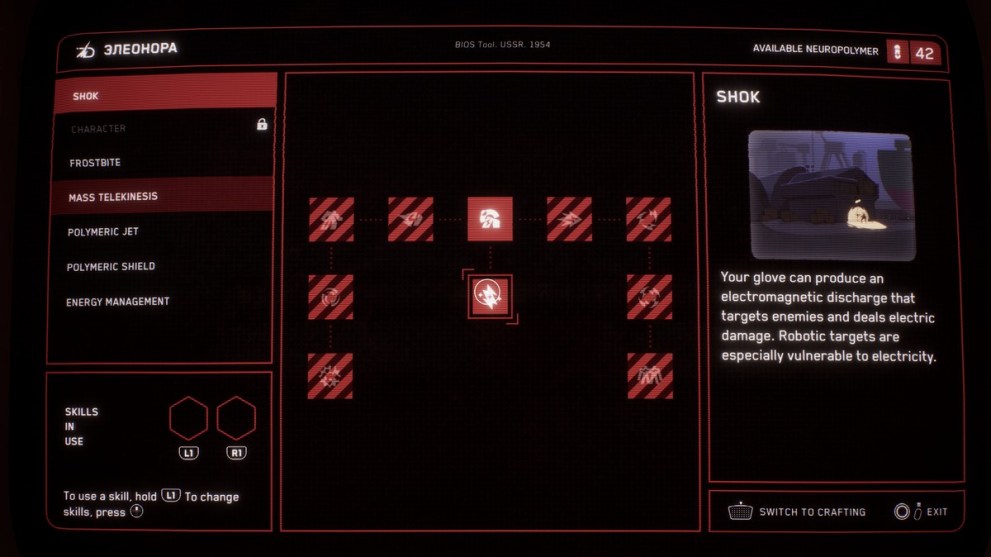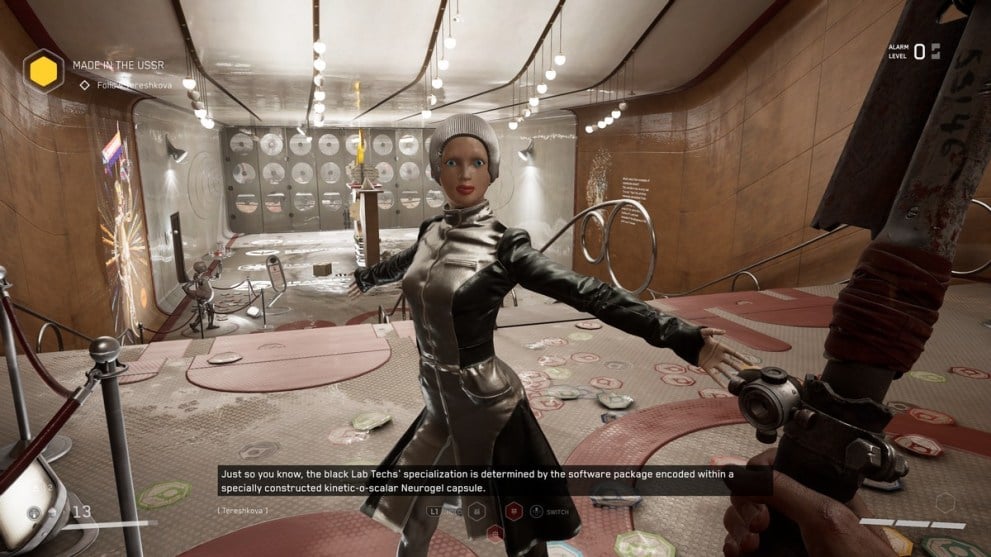Atomic Heart on PS5
Video game marketing is always a hit-or-miss affair, and sometimes, things just get players hyped no matter how long the game actually takes to come out. Having made a splash back in 2018, Mundfish and Focus Entertainment’s Atomic Heart is finally upon us, and while this first-person, action roleplaying shooter has almost always generated a buzz with its trailers and reveals, the real deal is less exciting than that, delivering an experience that is reminiscent of many other titles, but never at the same level of polish.
Set in a dystopian world where the Soviet Union has risen to immense power and technological advancements, it is probably the setting and worldbuilding that is the most interesting aspect of Atomic Heart. Players who are into lore and history will find a sweet home as the main character, Major P-3, who is often given more context as to the events leading up to the twisted plot in the game, as well as the long-running history of the country and its relationship with technology.
At the heart of it all is a special substance, Polymer, which is used for a bunch of crazy applications, including letting the dead speak or giving P-3 access to a variety of powers. Then there is also the neural network called the Kollectiv, whose next version was meant to usher in an age where humans could control their robot helpers with their minds. Naturally, things go haywire, and the aftermath brings unprecedented chaos with blood and gore.

Naturally, talking about the story would involve plenty of spoilers, which we will avoid talking about. But as a narrative for a video game, Atomic Heart contains many twists and turns that will keep you guessing most of the time. There are specific tropes that remain, but all in all, it remains a serviceable adventure whose lore is certainly more interesting than what is being presented.
Gameplay-wise, Atomic Heart could be best described as a first-person shooter that makes melee a priority, at least at the start, but the balance will be skewed as you progress along. In the initial stages, guns and ammo are at a premium, forcing players to rely more on their melee and dodging skills when going up against dangerous robots.
Related: Atomic Heart Controversy, Explained on The Escapist
There’s a standard attack that’s quick, a heavy attack that can be charged for more damage, and a quick dodge to get you out of immediate danger. Considering that early encounters often throw humanoid robots at you that are easier to handle, the melee formula works fine. Things then get significantly more challenging as the numbers game goes against you, forcing you to not just dodge unblockable attacks that can knock you down, but also danger from multiple fronts.
In a sense, such combat will work better outside of a first-person perspective, since the enemies usually move at speed and can be quite a handful to keep track of. Should you find yourself trapped in a corner, things get infinitely worse as they wail on you and send you to an untimely death. As Atomic Heart is not exactly generous with autosaves and checkpoints, this could mean plenty of lost progress if you haven’t gotten to the phone to save your game.

Once firearms come into the mix, from pistols, assault rifles to experimental energy weapons, then the combat enters another phase, where melee becomes less of a focus outside of generating energy for the corresponding weapons. The amount of looting that can be done in Atomic Heart will keep most players healthy when it comes to ammo and other components, and since inventory space dictates a selection of favored weapons, you should always have enough bullets to eliminate resistance, especially if you are a good shot from afar.
Outside of enclosed arenas that force you to use all the skills at your disposal, Atomic Heart can overlook its own combat systems to its detriment. Additional layers in the form of glove skills, elemental damage, and many of the 94 different skills that make up the skill tree in Atomic Heart actually have much potential. Any Polymer players collect from defeated enemies or from the environment can be invested in the skill tree, with a bunch of character-enhancing passives alongside the more active skills such as Shok or Frostbite.
With only two skill slots, making a decision on which skills to focus on can be hard, but the lack of a penalty when it comes to respeccing makes experimentation in Atomic Heart a pleasant endeavor. Perhaps you have a penchant for freezing and burning enemies at the same time, or Mass Telekinesis is your jam, allowing you to level the playing field when fighting against several enemies at once. There is always a new combination that can be found through trying things out, and that’s always a good thing.
Weapons can also be augmented with elemental cartridges in the form of fire, electricity, and ice enhancements, adding more utility to your melee and ranged weapons when dealing with enemies of all kinds. The crafting system comes into play here, not just letting players upgrade their chosen weapons in different stats, but also making it possible to add the cartridge component to play with fire, ice, and electricity literally. The way certain upgrades are only obtainable through challenging puzzle dungeons is also a nice touch, incentivizing the player to go out of their way in search of more power.

This seamless, open world of Atomic Heart seems well-placed to entertain players for about 20 hours for its main story and a dozen more when it comes to side content, but there are niggling issues about it that constantly bugged me throughout my adventure in the twisted Soviet Union Facility 3826.
Aside from the wonky combat balance that doesn’t always let its most fun parts shine, the looting can be a real pain. There is a slight delay between pressing the button input (R1) and the actual looting process, and that can often lead to only partially looted containers that can otherwise have useful components. And when you have dozens of lootable items lying around in a space, it usually takes too much time. Holding R1 is supposed to do the looting automatically, but even with that quality-of-life touch, sometimes it just doesn’t register the command at all.
There are also many sections in the game, particularly for side dungeons, where first-person platforming comes into play. While there have been many cases of successful implementation, Atomic Heart veers more on the less ideal side, with slow movement and imprecise detection that can cause missed grabs and death. It is also not surprising to find yourself getting stuck on certain geometry out in the open world.
Speaking of which, the open spaces of Facility 3826 are essentially broken up into small towns or areas that house a few points of interest. In between, there is simply nothing much else to see, which makes it less of a selling point and more of a hindrance, most notably when you do not have a vehicle handy. These automobiles are also quite brittle and have not benefitted from the technological advancements made by the Soviet Union, so good luck trying to mow down robots and still trying to get to your objective in a timely fashion.
Exploring these areas also provides another test of players’ patience, with its network of cameras and alert levels to work through. Any time you are caught fighting on camera, the alert levels go up, and more enemies get sent to your location. It is not just a matter of killing everything either, as there will constantly be repair bots that bring enemies back to life. You will need to stay alive, escape, and hope no other cameras spot you, left to rue the wasted ammo on enemies that are now back, and plotting your next move.

Perhaps the most damning issue about Atomic Heart is the writing when it comes to the characters. Although the story beats are usually well-developed enough to intrigue, the dialogue is a stark contrast. This is distinctly apparent for Major P-3 as the main character through which players experience the world through. Mundfish did recommend that players enable Russian dubbing instead of the English track with subtitles, and this could be the reason why beyond just general immersion.
Corny one-liners and edgy comebacks don’t exactly fit the profile of an elite soldier from the Intelligence Service, and the same goes for many of the other figures that players might come into contact with. The other offender is Nora, the machine that offers players upgrades for both gear and skills. First introduced as a dangerous entity, it turns out the true danger lies in its overly aggressive sexual innuendos. Who knew upgrading weapons should come with an audio warning? And since crafting things require you to select an item to craft, watch it get made and presented by Nora, then jump back into the menu to do it all over again, it just doesn’t make for an intuitive and fuss-free process.
And of course, the game suffers from all sorts of bugs and glitches, from letting me fall through the world, enemies clipping walls and teleporting to characters not responding to interactions. You have to be comfortable with losing progress if you want to see Atomic Heart through to the end, which is saying a lot.
There were definitely many things that could have worked out for Atomic Heart, especially with its setting and the way it tries to tell a story of technology and how far we should go with it. Despite what is a promising combat formula as well as the supporting systems behind it when it comes to skills, crafting, and upgrades, there are also several equally frustrating aspects of it that hold the game back. The hope is that Mundfish is able to fix some of the more glaring issues post-launch, but right now, it feels less like a welcomed revolution and more like a nuclear disaster.
Pros
Cons
Cumbersome looting and crafting processes.
Lifeless open world.
First-person platforming can be frustrating.
Glitches and bugs galore.
